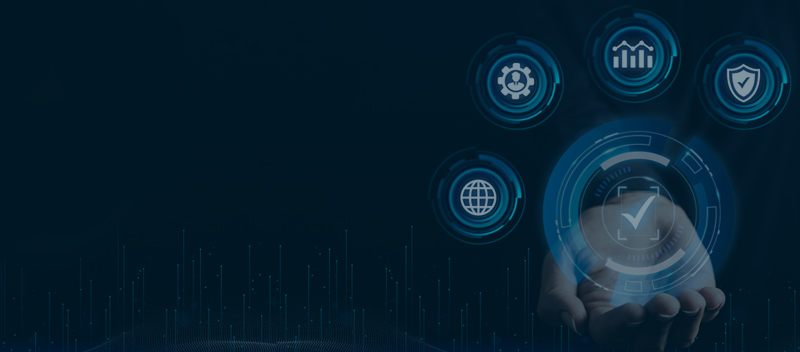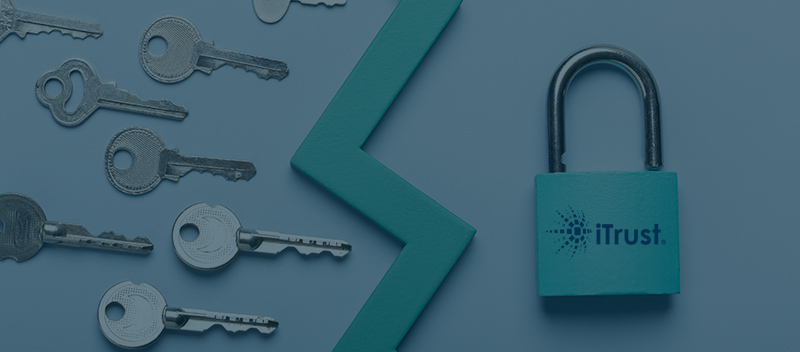Blog Understanding the World’s Most Intelligent Cyber Risk Ratings
Understanding the World’s Most Intelligent Cyber Risk Ratings

Cyber risk ratings serve as a powerful tool for objectively measuring and comparing an organization’s overall cybersecurity performance based on a set of multi-source data. This capability provides companies with an independent assessment of the security controls, governance practices, and risk exposure of their own organization as well as those of their customers, vendors, and partners.
Similar to the crucial function of credit ratings in the financial sector, cyber risk ratings also play a critical role in IT security by helping businesses build trust with internal and external stakeholders and make informed decisions on risk-related matters.
Cyber Risk and Its Impact
Cyber risk refers to the possibility of financial, operational, and reputational harm caused by cyber threats. Affecting every company that depends on information systems and digital networks, cyber risk can lead to serious consequences such as data breaches, prolonged business disruption, and regulatory violations.
Because these consequences can be extremely costly, organizations use many tools for managing cyber risk. Cyber risk ratings count among the most powerful resources companies can use to mitigate their internal and external risk exposure, including those arising from their relationships with customers, vendors, and other parties.
Developed as a proactive measure, cyber risk ratings complement traditional approaches to cybersecurity. Often reactive, traditional approaches focus on detecting and responding to threats only after these threats have occurred, which can lead to costly and disruptive outcomes. In contrast, proactive approaches anticipate and prevent threats before they deal damage. A proactive approach also adapts to evolving technologies, cyberattack tactics, and risk environment.
The Role of Cyber Risk Ratings in Cybersecurity
Cyber risk ratings provide a data-driven score that describes the current overall condition of a company’s cybersecurity. This quantified measure is based on factors such as network security, regulatory compliance, DNS health, history of security incidents, patching cadence, and hacker chatter.
Using cyber risk rating scores, companies can benchmark their security performance, identify vulnerabilities and weaknesses, prioritize remediation efforts, and make informed decisions on their relationships with internal and external stakeholders.
A cyber risk rating score functions like a barometer for cybersecurity health. It informs stakeholders whether it is safe to engage a company, or whether the company can infect stakeholders with its inherent and unmitigated risks. By heeding the itemized warnings generated by a risk rating score, the company can address gaps and weaknesses to improve its score and reassure stakeholders of its commitment to maintaining a secure environment.
Key Components of Cyber Risk Ratings
Cyber risk ratings consist of many elements and a risk rating score depends on many factors. A robust cyber risk rating framework consists of five key components:
- Asset Identification — establishes the organization’s key business objectives and identifies the critical IT assets that support those objectives.
- Threat Analysis — identifies the potential cyber threats (such as data breaches and denial-of-service attacks) that could compromise the critical IT assets. The analysis also considers the likelihood and impact of each threat, based on factors such as the threat actor’s motivation, capability, and opportunity, as well as the asset’s value, sensitivity, and exposure.
- Vulnerability Assessment — conducts a comprehensive review of the organization’s IT ecosystem to identify existing vulnerabilities and gaps. The assessment covers all aspects of the IT environment, such as hardware, software, network, cloud services, and endpoint devices. The assessment uses various methods and tools, such as scanning, testing, and auditing to detect and prioritize vulnerabilities.
- Risk Mitigation — develops and executes a remediation plan to address identified gaps and vulnerabilities. The plan should align with the company’s budget and risk appetite. Remediation measures include patching, updating software, configuring firewalls, encrypting data, enforcing policies, and educating users.
- Monitoring and Reporting — continuously monitors the performance and effectiveness of implemented risk mitigation measures, providing regular reports on the company’s cybersecurity status. The process uses metrics and indicators for timely detection and response to any incident or issue.
Benefits of Cyber Risk Ratings
Market demand for cyber risk ratings continues its steep, upward trend because of their compelling benefits:
- Real-time Risk Awareness: you gain a clear and objective view of your organization’s cyber risk exposure, based on data from multiple sources. This improves decision making, resource allocation, and stakeholder engagement.
- Improved Risk Management: you gain the ability to continuously monitor and evaluate your cyber risk performance, identify gaps and weaknesses, and implement remediation plans. This ability enables a proactive approach to addressing cyber threats and minimizing the potential impact of security incidents on your business operations, reputation, and bottom line. Knowing the risk rating scores of external stakeholders also helps you secure your supply chain and third-party relationships.
- Enhanced Compliance: you gain proactive, real-time support to keep your security and compliance measures in sustained adherence to applicable regulatory and industry standards, such as GDPR, PCI DSS, ISO 27001, and SOC 2.
- Elevated Trust: you build trust with internal and external stakeholders by achieving a favorable risk rating score. A high score improves confidence in your brand among customers, partners, and regulators.
The World’s Most Intelligent Cyber Risk Ratings
Cyber risk ratings represent a relatively new innovation in cybersecurity. While already using advanced technologies and sophisticated methods, risk rating platforms have yet to fully mature.
Some of the robust cyber risk rating frameworks and resources include Tenable’s Cyber Exposure Score (CES, an objective measure of an organization’s cyber risk exposure); Trend Micro’s Cyber Risk Index (CRI, a measure of the gap between a company’s security posture and its likelihood of getting attacked); Cyber Threat Intelligence (the large volumes of data collected and analyzed to understand the motivations, targets, behaviors of threat actors); and TrustNet’s iTrust Cyber Risk Ratings Platform (a next-gen service that enables 360° visibility into cybersecurity and compliance risks. The platform incorporates many useful functions such as continuous monitoring and assessment, automated compliance tracking, hacker threat analysis, and breach monitoring).
To be truly effective, cyber risk ratings must be holistic and flexible. They should consider and give appropriate weights to all the technical, governance, and cultural aspects of an organization’s IT ecosystem.
Challenges and Considerations
There are many challenges to integrating cyber risk ratings in your IT strategy. Here are some key hurdles to overcome:
- Resource requirements. Depending on the scope, cyber risk rating may require significant time, money, and expertise from both the rated organization and the ratings service provider. To address this challenge, organizations should carefully prioritize the most relevant and reliable rating criteria and methods, primarily by choosing the right ratings provider.
- Data privacy and security. The rating process may involve the handling of sensitive data such as network configurations and compliance audits. This data may be exposed to unauthorized access, misuse, or breach during the rating process. To mitigate this risk, organizations should ensure that the data collection and processing are done in a secure and transparent manner, and that the data is anonymized or encrypted whenever possible.
- Organizational culture. Cyber risk rating may encounter resistance or skepticism from stakeholders who may perceive it as a threat, burden, or distraction from their core workflows. Communicating the benefits and value of cyber risk rating and fostering a culture of trust can help resolve this issue.
Conclusion
Different approaches to cybersecurity lead to different business outcomes. Traditional and reactive approaches may work for a segment of an IT infrastructure. But they have proven inadequate in safeguarding every digital asset in a threat environment where the sophistication and severity of cybercrime continually escalates.
Designed to be proactive, cyber risk ratings represent a step change in building trust among businesses by helping safeguard the shared digital infrastructures that facilitate their engagements. Already, the French Cyberscore Law — which mandates cyberscores on the country’s 500 largest merchants’ websites — takes effect in October 2023, with the entire EU contemplating a similar move for the entire region.
The writing is on the wall. Cyber risk ratings will soon become a business imperative.
Every organization knows it needs intelligent, proactive, and adaptive solutions to stay ahead.
But only smart businesses often take the initiative to leverage the benefits sooner.




